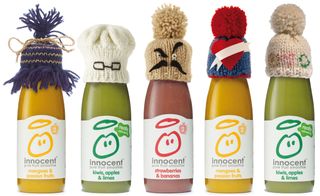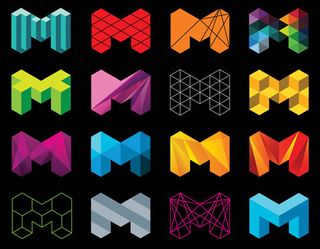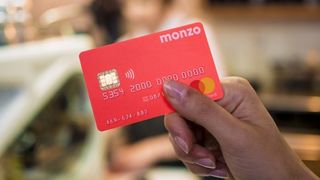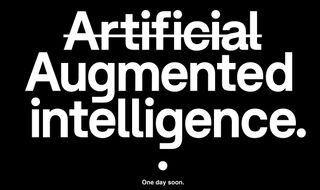3 huge branding trends that might have had their day
... and 3 more that aren't going anywhere any time soon.
However hard agencies fight against it, branding has always been subject to stylistic trends. Whether brands embrace or resist the status quo, the fact that some kind of aesthetic benchmark exists remains significant.
Arguably, there’s some value in a new launch sharing certain visual characteristics with the rest of its sector. It helps build familiarity and trust, as a sort of visual shorthand for consumers. There’s no denying that standing out is always easier if you position yourself against the grain of a trend, but you must work a lot harder to do so successfully.
In this article, we round up three stylistic approaches were all the rage in recent months, but are starting to look a little passé (and three more that aren't going anywhere any time soon).
For some awesome examples of advertising that made a giant impact, check out our roundup of the best print ads and the most innovative billboard advertising.
01. The age of Innocents

For years, Innocent was the de-facto benchmark for brands seeking an informal, quirky, casual brand voice. Chris Moody, Wolff Olins' chief creative officer and co-chair of this year's Brand Impact Awards, is tired of it. “It’s time to lay to rest the ask of: ‘Can we sound like Innocent?’” he says. “The whole thing of giving carrier bags an anthropomorphic voice is done. The focus should be on creating genuinely interesting dialogue with brands.”
02. Generic geometrics

Like the ubiquitous geometric sans-serif typefaces embraced by digital-first brands, geometric illustration is a common sight across the branding spectrum. “It’s easy to make and replicate by internal teams, but the drawback is it’s not particularly ownable,” says Rob Coke, an executive creative director based at Output, which was a winner at last year’s BIAs for its BBC Sport rebrand.
“Brands want to be seen as content creators rather than just selling products, so a more expressive style of illustration helps them appear more editorial in their approach.”
Get the Creative Bloq Newsletter
Daily design news, reviews, how-tos and more, as picked by the editors.
03. 50 shades brighter

Bright and poppy ‘challenger’ colour palettes show no sign of waning. “Often driven by digital disruption, the use of colour is a starting point to signify: ‘Notice us, we are different,’” asserts James Greenfield, founder of Koto. “Banks with pink debit cards, turquoise advertising and clashing palettes want to grab our attention.”
But if everyone’s shouting with colour, then who’s really standing out?
Three broader design movements built to last
“There was once a school of thought that all branding should be timeless,” says Johnson Banks founder, Michael Johnson. “Now, many rebrands happen within four or five years, rather than every 10 or 15. Branding has become much more tactical, and we’re seeing more designs that are style based.”
“In their early stages, trends can be useful to help align you with a style of work, a movement,” says Coke. “The brand benefits from being seen as contemporary, part of the culture. It’s possible to be part of it and yet put a different spin on it.”
For Moody, it’s clear which route to take. His view is that trends are to be avoided at all costs. “House styles suck, trends suck, looking like your competitors sucks,” he says.
But what can brands do to ensure their strategies are built to last? Consumers expect more of brands than ever before, and these creative movements all consider the bigger picture.
01. Standing for something

From Nike standing shoulder to shoulder with ‘disgraced’ American footballer Colin Kaepernick to Gillette attempting to tackle toxic masculinity, many brands are choosing sides and playing an advocacy role on pressing social issues. Some are more successful than others.
“We regularly turn down projects that we think are taking a ‘false’ position,” says Johnson. “The upswing of FMCG brands trying to persuade me that their soap, breakfast cereal or toothpick has a higher moral purpose makes my teeth grind.”
Louise Kyme, Studio Texture's strategy director, observes that an increasing number of brands are leading with a “female-centric, body-positive, diverse and rebellious spirit,” while Greenfield draws attention to the ‘good versus bad tech’ debate, brought starkly into the spotlight by the likes of Facebook. “Some companies already have this on the agenda, some need a little encouragement,” he says.
02. Embracing relevant technologies

For Kyme, artificial intelligence is where the most exciting potential for branding innovation can be found – and Studio Texture puts its money where its mouth is, with a sister company entirely dedicated to A.I.
“We see enormous opportunity for machines learning to augment the work we creatives do,” she says. “One A.I. tool we’re working on seeks to predict emotional responses to creative content at a speed and scale that was previously unimaginable. Not just positive and negative sentiment, but the full spectrum of emotions, from specific audiences – at the push of a button. This will enable us to test messaging in an instant.”
While Moody believes the over-hyped VR revolution is a technological red herring – describing VR headsets as the equivalent of 3D glasses in the 80s – he’s a strong advocate of the role of sound design in a modern brand toolkit. “All respectable brands launching this year should have a point of view on voice, and a sonic landscape,” he says.
03. Thinking more sustainably

Sustainability is moving further and further up the agenda for many brands. “It’s huge, but should be treated like hygiene,” says Moody. “The trap many brands fall into is making a big thing about stuff they should be doing anyway. All corporate social responsibility (CSR) teams on the planet should be disbanded immediately and merged into the blood-flow of the business.”
Andy Howell, co-founder and creative director at The Clearing, agrees: “Sustainability shouldn’t be a campaign that comes with an inevitable time-limit. It should be built into the essence of the brand,” he says. “Things like sustainable HQs, supply chains, materials and circular systems should become part of how companies work.”
This content was originally published in issue 292 of Computer Arts, the world's best-selling design magazine. Buy issue 292 or subscribe to Computer Arts.
Read more:

Thank you for reading 5 articles this month* Join now for unlimited access
Enjoy your first month for just £1 / $1 / €1
*Read 5 free articles per month without a subscription

Join now for unlimited access
Try first month for just £1 / $1 / €1

Nick has worked with world-class agencies including Wolff Olins, Taxi Studio and Vault49 on brand storytelling, tone of voice and verbal strategy for global brands such as Virgin, TikTok, and Bite Back 2030. Nick launched the Brand Impact Awards in 2013 while editor of Computer Arts, and remains chair of judges. He's written for Creative Bloq on design and branding matters since the site's launch.